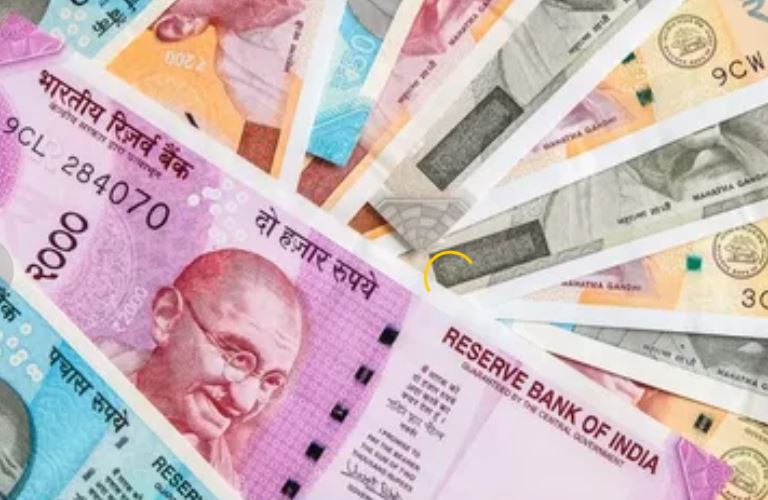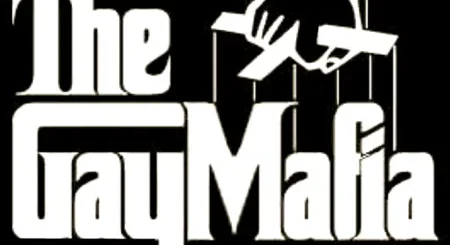
While Americans are debating if trannies have a right to jackoff in women’s locker rooms, the world continues to move away from the US Dollar.
India and Bangladesh are going to start using their own currencies for bilateral trade.
They’re not the only country that has done this in trade with India.
The world no longer wants the US Dollar which means America’s decline into an economic abyss is unavoidable.
WHY THE UNITED STATES MUST JOIN THE BRICS
A NEW INTERNATIONAL ORDER FOR MANKIND

Add your name to the list of prominent signers who are calling for the U.S. to Join the BRICS
This report serves as an outline for what is, perhaps, the best opportunity the United States has been given in decades to regain its founding identity, by joining the new international order being created at this moment by a group of leading nations to move civilization forward into a new paradigm for mankind. The planet is truly at an existential crossroads, and without a dramatic change of policy from within the United States, away from the last fourteen years of the Bush/Obama presidencies typified by Wall Street bailouts and interventionist, Cold War-style warfare, the world could very well erupt into a Third World War.
 Outlined here is a mapping of the new paradigm emerging around the BRICS nations (Brazil, Russia, China, India and South Africa), how the United States can join this revolutionary new dynamic, the intellectual and political leadership provided by Lyndon and Helga LaRouche over the last forty years to make this vision a reality, and an epistomological overview of where mankind, as a species, is headed were this new paradigm to envelop the entire planet.
Outlined here is a mapping of the new paradigm emerging around the BRICS nations (Brazil, Russia, China, India and South Africa), how the United States can join this revolutionary new dynamic, the intellectual and political leadership provided by Lyndon and Helga LaRouche over the last forty years to make this vision a reality, and an epistomological overview of where mankind, as a species, is headed were this new paradigm to envelop the entire planet.
CONTENTS
 DOWNLOAD PDF
DOWNLOAD PDF
Our use of cookies
We use essential cookies to make our site work.
We’d like to use additional cookies to understand how you use the site and improve our services.
You can find details of these and all other cookies on our cookie policy.
Written evidence submitted by Hacked Off
Committee for Digital, Culture, Media and Sport
Online Harms and Disinformation Sub-Committee:
COVID-19 Disinformation & Misinformation Call for Evidence
Summary
This submission provides evidence of disinformation and misinformation[1] about Covid-19 published in four national newspapers in the last 14 weeks across the following categories:
- Cases of disinformation circulated on social media platforms operated by newspaper publishers (colloquially referred to as “comment sections”, or “below the line”)
- Cases of disinformation published by newspaper publishers themselves in their own news stories.
We did not undertake a comprehensive analysis of every newspaper but sampled four national newspapers during 2 weeks between 6th March and 20th March. Our findings therefore do not represent the full scale of disinformation appearing in the national press. The sample evidence for each of the four newspapers across each category is included as an appendix.
Our evidence demonstrates that:
- The social media platforms operated by news media publishers have been responsible for circulating dangerous and deeply irresponsible disinformation about COVID-19. Any approach to regulating or otherwise tackling User Generated Content (UGC) disinformation must cover the platforms operated by the largest newspaper publishers;
- Most of the largest newspaper publishers are members of the Independent Press Standards Organisation (IPSO), which claims to regulate newspapers’ social media platforms[2]. However, IPSO has failed to stem the influx of fake news being circulated on newspapers’ platforms, and there is little evidence of its intervention at all. This failure demonstrates that IPSO cannot be relied upon as a solution to UGC disinformation on its members’ websites, and is in stark contrast to other social media platforms such as Twitter and Facebook which have taken positive measures to deal with the problem on their platforms;
- Established news publishers have themselves been responsible for publishing false information (“fake news”) regarding COVID-19 in their news stories. Any approach to tackling online harm and disinformation will be ineffective if it addresses UGC exclusively, while permitting established publishers with the largest reach to publish conspiracy theories and fake news with impunity (whether on their own websites or via republication on social media platforms);
- Although IPSO claims to regulate both editorial content of news media publishers and their social media platforms (i.e. their comment sections), it has failed to maintain basic standards of accuracy in respect of COVID-19 reporting in either case;
- There are vast numbers of news and information websites across the internet, which are neither part of the established media nor social media platforms, which are publishing false information about COVID-19. These will not be captured by a “UGC-only” approach to online harms and disinformation.
Part 1: Disinformation on established newspapers’ social media platforms
- Many established newspapers operate popular social media platforms on their websites, which are accessible to users who wish to leave comments under individual stories. These are often referred to as “comment sections” or “below the line”. They provide an opportunity for readers to engage with stories and interact with other readers through the newspaper’s own platform. The content of these sections is entirely user generated.
- Four of the largest newspaper websites which operate these platforms were reviewed for the purposes of this submission: The Sun, The Telegraph, The Mirror and The Mail. Five example stories from each website with disinformation (“fake news”) in the UGC “comment” sections were captured, with screenshots showing each case of disinformation.
- The evidence gathered is set out in full in the Appendix. It is a snapshot of the problem rather than an exhaustive report of all newspaper UGC disinformation since the Covid crisis started.
The evidence shows:
-
- 15 examples of UGC disinformation under stories in The Sun
- 13 examples under stories in the Telegraph
- 12 examples under stories in the Mirror
- 12 examples under stories in the Mail
- These examples breakdown into the following subcategories:
| Description of disinformation | No. examples in The Sun | The Telegraph | The Mirror | The Mail |
| The virus is a hoax designed to control citizens; and/or to block EU withdrawal | 3 | |||
| Virus is linked to 5G | 4 | 1 | ||
| Virus is a bio-weapon and/or was engineered & began in laboratory | 13 | 3 | 6 | 3 |
| The virus was created by Bill Gates; that world events are manipulated by “elites”, and/or that the virus was intended to be used as a form of population control | 1 | 3 | 1 | 4 |
| The virus is killed in sunlight, or under standard UV lamps | 3 | |||
| The virus began in the USA | 1 | 2 | ||
| Miscellaneous | 1: China engineers fruit from plastic
1: David Icke video – series of theories 1: The 9/11 terror attack was a hoax |
1: President Trump is prolonging the effect of the virus because Ivanka Trump stands to profit from sales of coffins. |
- In several of these examples, one user who cites a conspiracy theory or inaccurate story prompts others to respond similarly. For example, in The Telegraph, Story 1, Comments 1, 3 & 4 (see Appendix p 15), several users suggest that sunlight and UV rays are a viable means of killing the virus.
- The consequences of such disinformation can be serious. Reportedly, at least 20 5G phone masts are believed to have been vandalised in connection with the conspiracy theory that 5G is linked to COVID-19.[3] Many disinformation comments alleging that the virus was developed deliberately in China, often as a “bio-weapon”, were laced with racism (see The Sun, Story 5, Comment 1 in Appendix, p 11).
- Conspiracy theories about “world elites” and the alleged involvement of Bill Gates are not only damaging to the work of his Foundation, but are commonly linked to anti-Semitic conspiracy theories (George Soros, often the subject of such theories, is referenced in Telegraph Story 2, Comment 1: see Appendix, p 17). They sometimes also reference other conspiracy theories, such as vaccine safety (Mirror Story 1, Comment 7; Mail Story 1, Comment 3: see Appendix pp 26 and pp 33).
- These comments, set out in full in the Appendix, are similar to and no less damaging than the conspiracy theories circulating on Facebook and Twitter.
- Many of these comments remained published and accessible for days and even weeks after they were published.
Conclusion (1):
The social media platforms operated by news media publishers have been responsible for circulating dangerous and deeply irresponsible disinformation about COVID-19. Any approach to tackling UGC disinformation must cover the platforms operated by the largest newspaper publishers.
Reach of the largest news publishers
- These social media platforms on newspaper websites are usually accessible to anyone with internet access. Even in the case of the Telegraph, which operates a paywall, non-subscribing readers appear to still be able to read the comment section.
- The cumulative weekly reach of the largest newspaper websites in the UK is over 35m.[4] On a typical day the reach of The Sun’s website is 7.2m, the Telegraph’s is 2.3m, the Mirror’s is 4.7m and the Mail’s is 4m.[5] Disinformation on these platforms could be reaching millions of individuals every day.
The role of IPSO
- Each of these four titles are members of IPSO which handles complaints on their behalf. Reformers have long argued that IPSO should be replaced by an independent body capable of effective self-regulation as well as complaints handling, as recommended by the Leveson Report and enshrined in the Royal Charter which was endorsed by all major parties in Parliament.[6]
- IPSO has stated on its website that it is handling complaints about content on the social media platforms operated by member publishers.[7]
- IPSO states that it will apply the Editors’ Code when considering complaints about UGC[8]. The Code’s Clause 1 covers accuracy.[9] Yet to date no action has been taken against any publisher in respect of the examples of disinformation and “fake news” contained in this report.
- IPSO’s policy in respect of UGC is that it will handle complaints either after comments have been moderated, or after a complaint has first been made to the publication. This broadly mirrors its policy on handling complaints about editorial content, which requires complaints to be made to the publication in the first instance.
- Although IPSO describes its role as regulatory, its policy and practices on both editorial and UGC disinformation appears to be entirely reactive: disinformation is only addressed if a complaint has been brought forward (and only then after a delay while the publication considers it – with editorial content this is up to 30 days). This causes significant problems in tackling disinformation:
- Blatant and damaging disinformation can appear, having been published as UGC or editorially, indefinitely if no one complains.
- Damaging disinformation, even if the subject of a complaint, can sit on the newspaper’s social media platform for some time (30 days, if the same as editorial content, although IPSO does not set this out) while the publication considers a complaint.
- There are many more structural obstacles which prevent IPSO from acting as an independent and effective regulator in respect of disinformation about COVID-19 on newspapers’ social media platforms. These include, for example, excessive industry influence in the body, inability to change the standards for which it is responsible, and inability to change its own rules without industry agreement. These are set out in the most recent independent assessment of IPSO against the Leveson Recommendations from the Media Standards Trust.[10]
- When the same disinformation has been spread on other non-news media platforms, those platforms have often responded proactively. Rightly, their efforts have been heavily scrutinised, but they can point to a growing number of proactive initiatives to resist the spread of disinformation.[11] Only last week, Facebook announced it was taking action to notify readers of disinformation in response to a report from Avaaz.[12]
- IPSO’s lack of action, on the other hand, shows that it either lacks the necessary powers or lacks the will to hold its members properly to account. Any approach to UGC regulation which exempts IPSO members or delegates regulatory responsibility to IPSO will be wholly ineffective.
Conclusion (2):
Most of the largest newspaper publishers are members of IPSO, which claims to regulate newspapers’ social media platforms. However, IPSO has failed to stem the influx of fake news being circulated on newspapers’ platforms or to tackle any individual cases. IPSO’s and the industry’s failure to respond to the disinformation being published by users of newspaper’ social media platforms demonstrates that IPSO cannot form any part of the solution to UGC disinformation on newspaper websites.
Part 2: Disinformation published by established media outlets
- In addition to UGC forums, inaccurate stories about COVID-19 continue to be published by traditional media outlets which reach millions of citizens. Yet the Government’s approach to online harms, to date, has sought to engage exclusively with UGC. There is no reasonable basis for accepting a distinction between UGC and professionally published (or edited) content when it comes to the capacity of online disinformation to cause harm.
- In fact, if there is any distinction, it is that the capacity for harm is greater from established media outlets. Large publishers have access to significant resources to confirm the veracity of content. Everything published is an active editorial decision, subject to legal and other forms of review. Readers are more likely to believe information published by a well-established newspaper or its online site – especially one that they choose to read regularly – than information which appears on social media.[13]
- Established media also have a special responsibility to ensure the accuracy of their content. Media outlets enjoy many legal privileges and competitive advantages. Print newspapers and, following the recent Budget, online versions of newspapers are exempt from VAT. Statutes including, for example, the Data Protection Act 2018 include special exemptions for publishers of journalistic content.
- Given the newspapers’ access to fact-checking resources, and additional entitlements in law (some of which amount to significant public subsidy), their responsibility to publish accurately should be greater, while the potential for harm from disinformation is more acute. But as our evidence shows, many publishers have failed to uphold basic standards of accuracy in reporting on the COVID-19 crisis.
- Solutions to disinformation which address UGC but excludes content published by established news publishers would result in private citizens being held to higher standards of accountability than well-resourced and influential media publishers. Such an approach would be illogical, unreasonable, and wrong.
- The evidence for this is set out in category 2 of the appendix, which shows a total of 31 examples of disinformation published by major media outlets.
- These examples can be categorised as follows:
| Description of disinformation | Examples in The Sun | Telegraph | Mirror | Express | Metro | Daily Star | |
| Mass cremations | 1 | 1 | |||||
| Origin of virus | 2 | 2 | 2 | ||||
| Advance knowledge of virus | 1 | ||||||
| Advice & conduct of authorities | 1 | 1 | 1 | ||||
| Prevalence, seriousness or effect of virus | 1 | 2 | 2 | 4 | 1 | ||
| Regarding Bill Gates | 1 | 1 | |||||
| Cures and treatments | 3 | 2 | 1 | ||||
| 5G link | 1 |
- Much of this disinformation follows similar themes to UGC, such as references to Bill Gates (examples 11 & 12, as set out in the Appendix p 44 and 45), origins of the virus (examples 3, 4 and 7: Appendix p 41-43) and the alleged link to 5G technology (example 15, Appendix p. 46).
- In most cases, these examples are verifiably false, as confirmed by a third party (usually Full Fact). This is set out in the relevant evidence category in the Appendix, from p 40.
- None of these examples are minor or careless inaccuracies. They are serious and either deliberate or extremely reckless. They meet any reasonable definition of disinformation.
- Other stories suggested either that the virus was more serious than the public has been told by relevant authorities or that it was less serious. Either direction risks adversely influencing public behaviour.
- The most serious examples of fake news – those relating to prophylactic medicinal interventions, and to treatments or cures – which have the potential for direct harm (and thus would be taken down immediately by Facebook under its policy) can be found in national newspapers. They have not been taken down even after criticism from reputable fact-checkers.
- In some of the most egregious examples, news stories rely on the body of an article to mitigate against a dubious headline. Although this practice is common and has the potential to cause serious harm, only the worst examples were collected for the purpose of this submission. For example, the headline of example number 18 is “Coronavirus cure: Does drinking warm water help cure coronavirus?”.
The article eventually states:
“However, the claims quickly came under question and Kalpana Sabapathy, a clinical epidemiologist at the London School of Hygiene and Tropical Medicine told BBC Future drinking water doesn’t kill coronavirus.”
This comment is set against the views of another person who claims (without evidence) that drinking warm water does provide a cure. Nowhere does the article state that there is no scientific evidence that warm water cures the virus.
Furthermore, the reader has to read 652 words, pass through two page-width videos, three page-width images (two of which feature people drinking water), three advertisements and eleven prominent links to other stories before reaching the accurate rebuttal. For most readers, the headline is all they will read.
- Many other articles also falsely raise hopes of a “cure” (see examples 28 & 30: Appendix pp 51 and 52). It has already been reported that sales of the drug chloroquine, referenced in both of those articles, are believed to have increased on the “dark web”.[14] Taking drugs without the supervision of a medical professional carries significant risks.
- The 5G conspiracy theory, which is believed to be the reason for acts of vandalism carried out against 5G equipment, has also been reproduced in newspapers without rebuttal (example 15: Appendix p 46).
- In summary, there is no reason to distinguish professional disinformation from user disinformation when it comes to online harms. Both have the capacity to cause serious harm and both must be captured by any legislative strategy to address online harms.
Conclusion (3):
Established news publishers have themselves been responsible for publishing false information (“fake news”) regarding COVID-19 as news stories. Any approach to online harm and disinformation will be ineffective if it addresses UGC exclusively, while permitting established publishers with the largest reach (and a higher degree of trust among its readers) to republish conspiracy theories and fake news with impunity.
The role of IPSO
- In addition to newspaper website UGC, the industry’s complaints-handling body IPSO also claims responsibility for tackling editorial disinformation.
- At time of writing, IPSO has done nothing in response to any of the stories referred to in the Appendix. Even if IPSO were to act, precedent suggests that none will be remedied promptly with a correction or adjudication of similar prominence to the original false story[15].
- Typically, around 100 days elapse between the publication of an article and an IPSO adjudication[16]. Often this is longer. In that time, many millions of citizens could have been misled.
Conclusion (4):
The complaints-handler IPSO which claims to regulate both news media publishers and their social media platforms has failed to maintain basic standards of accuracy in respect of COVID-19 reporting.
- In addition to established media outlets, there are many other information/news websites which are publishing disinformation about COVID-19.
- These websites exist across the internet; many of them specialising in disinformation.
Here are three examples:
Comment: brutalproof.net is a TARGET of the British Empire…below for exposing how evil they are.
| Name | URL | Summary |
| Zionist Bioweapon Against China-Coronavirus | http://brutalproof.net/2020/02/zionist-bioweapon-against-china-coronavirus/ | Anti-Semitic conspiracy theory that COVID-19 was started by the Israeli state. |
| There’s A Connection Between Coronavirus And 5G | https://humansarefree.com/2020/02/connection-between-coronavirus-and-5g.html | Alleges 5G is connected to COVID-19. |
| CORONAVIRUS HOAX: Fake Virus Pandemic Fabricated to Cover-Up Global Outbreak of 5G Syndrome | http://themillenniumreport.com/2020/03/coronavirus-hoax-fake-virus-pandemic-fabricated-to-cover-up-global-outbreak-of-5g-syndrome/ | Virus is a hoax staged to mask damaging effects of global 5G rollout. |
- A legislative strategy which engages with UGC only will not address these websites. Such an approach would be unacceptable. Legislative action on disinformation and online harms must extend to publishers of disinformation more broadly than private citizens alone.
Conclusion (5):
There are vast numbers of news and information websites across the internet, which are neither part of the established media nor social media platforms, which are publishing false information about COVID-19 which will not be captured by a “UGC-only” approach to online harms and disinformation.
Annex:
5G conspiracy theorists post under Sun article on 5G locations as masts attacked across the UK
Background
On April 4th reports were published that 5G phone masts had been attacked across the UK.[17]
On April 6th, The Sun newspaper published an article which included maps showing 5G coverage across the UK[18]. It is possible from viewing the map to get an approximate idea of where masts are located.
Comments which alleged that 5G was unsafe soon appeared under the article. They remain accessible under the article, with some of them published 14 days ago (as of April 20th 2020).
Since the article was published, reports have been published that 53 masts have now been the subject of attacks in total.[19]
Comment
Readers will be interested in how and where they will be able to access 5G technology. It is not wrong for newspapers to cover this.
But in the context of a global pandemic during which a conspiracy theory has been widely spread that 5G is linked to the virus, publication of such an article must be handled with care.
Instead, not only did the article effectively allow readers a way to approximately locate where masts had been erected, in the knowledge that 20 attacks had already been reported around the UK, but comments alleging that this technology was unsafe were published and left accessible to The Sun’s millions of online readers for two weeks (and counting).
This is a further example, not of COVID-19 coverage but on a related issue, where UGC appearing on a newspaper’s social media platform has included clear, uncorrected disinformation. On this occasion, that disinformation could very well have put 5G equipment – and lives according to a statement by EE – at risk.[20]
Timeline
The full timeline of these events is as follows:
4th April: Reports published of videos showing 5G masts being set alight.[21]
6th April (10.25am): The Sun publish the article “Is 5G in your area? Mast maps reveal if you can upgrade to ultra-fast mobile internet”[22]
A comment is published:
Massively concerned and terrified for my grandchildrens future. 26,000 scientists have objected to this and I have not consented to being exposed to this dangerous level of radiation. This will seriously damage peoples health and all life on earth .BAN 5g
7th April: A comment is published:
“You’ve only got to look at the pedigree of these people in the ‘club’ pushing this ‘stuff’ : eg: ‘vaccinate the world’ Gates – dad boss of Planned Parenthood, started by eugenicist Margaret Sanger friend of Hitler. Find some of the pronouncements of Betrand Russell.
The dummies carrying out the orders to ‘get ahead’, are like the compartmentalised lower levels of Masonry who know nothing of the truth.”
A comment is published:
“Some people are suggesting a link between disease and radiation in that the vibrations induced in the body’s cells allows entry of viruses. A microwave oven works by oscillating water molecules at 2.4ish GHz – the same as WIFI – you couldn’t make it up! (I think wifi also uses 5GHz)
Recall how Cameron – now living the nice country life – said we should accept that many (50%?) of people would get cancer.”
9th April: A comment is published:
Judging by the poll the vast majority of people DO NOT want this .nobody has been consulted.This surely isn’t legal .The people dont consent .The studies prove it’s highly dangerous so why is this being forced upon us .ask why?
18th April: Reports are published that 53 masts have now been targeted for attacks.[23] None of these comments have been removed. The Sun website reaches more than 7m people on a daily basis.[24]













